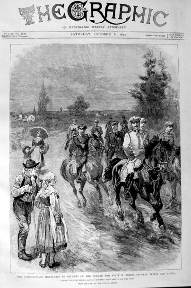A different reality often lurks behind the
mask
of respectability. For example, one of the most repulsive equestrian travesties
was cloaked behind the dashing finery of European cavalry uniforms.
This
occurred in Europe in 1892 when 121 Austrian and 132 German
cavalry officers challenged each other to a race. The German contestants
were required to ride 580 kilometres (360 miles) from Berlin to Vienna, while
their counterparts raced in the opposite direction.
The news illustration (above) from 1892 depicts a misleading scene. In reality
there was nothing debonair or gallant about the German and Austrian officers
shown on the magazine cover, as these
mounted criminals raced 46 horses to death in 71 hours.
Horrified reporters revealed
details about the sufferings of the hundreds of other horses.
“Some died on the road, while others, lame and almost ready to drop from
exhaustion, were kept going by injections of morphine to deaden pain, and were
sustained by doses of brandy, and all, with hardly an exception, were cruelly
tried.”
This
act of national chauvinism resulted in editors around the world condemning the
murderous event. As far away as Australia, one paper thundered, “We
trust no magistrate in any English community would hesitate to convict a rider
who attempted to accomplish such a feat for sport.”
The
public expressed outrage at this
vain display of personal egotism and national pride.
There was widespread demand for reform. Shortly thereafter rules were enacted to
protect horses from being raced to death in endurance events.
The
Long Riders' Guild was formed to advance the ancient art of equestrian travel,
to educate people on how to make an equestrian journey, to ensure that horses
are never abused, to lay false claims to rest, to protect the public from
mounted charlatans and to alert the media that care should be taken when
interviewing so-called horse travellers.
The
Guild is not an international police force. It is a brotherhood of equestrian
explorers.
We
collectively realize that accidents occur to horse and rider without
premeditation or warning. In such a case the Guild requires that the journey be
halted so as to allow the horse the time it needs to heal. There are many
examples of ethical Long Riders who have stopped their journeys prematurely
because they understood that the physical welfare of the horse takes precedence
over their ego.
Sadly,
just like any human effort, there are occasional outlaws who appear in the world
of equestrian travel. When these villains appear, they abuse their horses, ride
them too hard, do not feed them properly, and continue the journey even if the
horse becomes wounded.
Such actions are embodied in the Hungarian word lóháldl, which states
that the horse is expendable.
Times
have changed. With
the dawning of the twenty-first century, and with the availability of the
Internet, those who misused their horses, deceived the public or lied about
their exploits can hide no longer.
The
forthcoming “Encyclopaedia of Equestrian Exploration” contains the first study
into what is known as Equestrian Narcissistic Disorder (END). Historical
research has revealed that those individuals who abuse or kill their horses
often share many common traits including being an exhibitionist, having an
excessive need for admiration, adopting haughty body language, preferring showy
clothes or a historical costume, exaggerating their achievements, persistently
bragging and having a longing for fame.
Such
individuals routinely overestimate their abilities, act recklessly, are in a
hurry to finish, make strong denials regarding setbacks or injuries, refuse to
accept responsibility for their mistakes, are reluctant to halt the journey and
give precedence to personal goals rather than the horse’s safety.
Because they are searching for fans not equals they are averse to being compared
to legitimate Long Riders and avoid contact with Members of the Guild. They
never volunteer information about other equestrian travellers to the media. They
use the horse to secure the public’s trust or to attract an audience. They are
anxious to be labelled the first, the fastest, bravest, sexiest, etc. Their
desire for media attention becomes addictive. Any setback is used to generate
public sympathy.
People
suffering from END are usually anxious to deny, ignore or belittle any spiritual
aspects of the journey and cannot identify with such an experience.
The
Guild never turns a blind eye to horse abuse or unethical behaviour.
Whereas in the past horses were ridden with utter ruthlessness, often to their
deliberate death, Members of the Guild
collectively believe that no religious, political, medical, cultural, financial,
sporting or personal goal grants a human the right to abuse a horse during a
journey.
Long Riders are committed to protecting the welfare of their animals.
Listed
below are those individuals who exploited their horses, misled the public or
deceived the press in an attempt to glorify themselves.
Even though Benedict Allen had been informed that his Mongolian
horses were being eaten alive by swarms of carnivorous insects, he left the
animals to die an agonizing death. Click on photo for details. |

|
Francois
Xavier Aubry
bragged “I’d kill every horse along the trail,” then proceeded to ride six
horses to death and leave half a dozen more left permanently wounded.
Click on photo for details. |
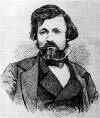 |
|
Sandor
Bako
and Peter
Csepin were arrested in Sweden and their wounded horses confiscated by
the police. After promising the authorities that they would return the
animals back to Hungary via a trailer, they broke their word and rode the
injured horses across Europe. Click on photo for details.
|

|
In an
ill-fated attempt to enter the Guinness Book of Records, Carl Wayne
Cooper
crippled or
killed more horses in the shortest possible distance than anyone on record.
Click on
photo for details. |
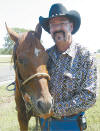
|
Daniel Defoe (1660-1731) - English pamphleteer, journalist and author of
Robinson Crusoe (published in 1719), Defoe was considered the founder of
the English novel. Before his time, stories were usually written as long
poems or dramas. Defoe produced romantic adventures in what we now recognise
as the novel. The son of a London tradesman, before he became a writer Defoe
plunged into politics at an early age and was involved in an unsuccessful
rebellion against King James II. The author of Robinson Crusoe also
wrote hundreds of political articles, one of which landed him in prison.
In the 1720s Defoe had ceased to be politically
controversial in his writings. He produced several historical works,
including A Tour through the whole Island of Great Britain
(1724-1727, three volumes), without leaving London! Defoe later admitted he
had "fibbed a bit" in regards to his phantom equestrian journey.
He continued his streak of literary hoaxing by
publishing The History of the Great Plague in London. The writer had
indeed lived through the plague, but what he did not reveal to his readers was
that when it occurred in 1665 he was only five years old! |

|
|
Richard Fipps
deliberately deceived the American public, repeatedly lied to members of the
press, obtained money and equipment under false pretences, pretended to be
raising funds for famous charities, misappropriated the reputation of cowboy
organizations and fallaciously used the names of Christian groups without
their knowledge or approval. Click on photo for details.
|
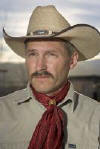 |
|
Craig
Heydon
and his son Curtis
Heydon were declared guilty of 21 counts of
animal cruelty, fined $24,000 each, and sent to prison, after a Montana
court convicted them of starving and abusing their riding and pack horses.
Click on photo for details. |

|
|
In 2004 the
Walt Disney Studio claimed their movie, “Hidalgo,” was based on “the true story”
of Frank Hopkins. An international team of more than eighty historians,
academics, diplomats, scientists, authors and equestrian experts in five
countries revealed that the counterfeit cowboy was the greatest equestrian
travel rogue of all time and the man responsible for having perpetrated the most
elaborate and destructive equestrian myth in modern history.
Click on photo for details.
|
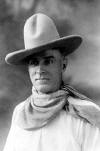 |
|
Neale Irons
made a
catastrophic journey across Mongolia. One witness stated his horse’s
injuries were, "the size of dinner plates and going to the bone." In
addition to these open wounds, the injured horse was also being eaten alive
by insects. According to an official statement, "I could see the bones and
there were hundreds of worms (insects)."
Click on photo for details.
|
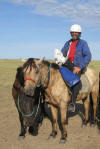
|
|
Though
they claimed to be “valiant English Conquistadors,” four English Oxford
University students hold the record for destroying more horses in a journey
than anyone in history. During a 49 day ride across Peru, Stephen Julius,
David Limb, John Fanshawe and Annabelle Wilkinson
killed, wounded or severely rode 81 horses and 19 mules. Click on photo for
details.
|

|
|
Bronco Charlie Miller rode from New York to San
Francisco in 1931 on his horse, Pole Star. However, Miller is not a
Historical Member of The Long Riders' Guild because he boasted of having ridden
two horses to death in the late 1880s during a six-day long horse versus
bicycle race in London. |
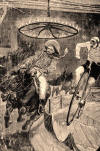
Click on photo to enlarge. |
|
It is a well known rule that no matter how many miles a person may ride, if
they abuse their horse the Guild will not hesitate to take action. Tod
“Doc” Mishler was immediately removed as a Member when it was discovered
that he had been arrested for animal cruelty. Click on photo for more
details. |
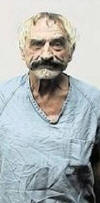
|
Valerii
Popov
inflicted so
much pain and suffering on his two horses during a ride from Russia to
Paris, that he was arrested in Germany. After promising German and Russian
diplomats that he would transport the injured animals home, he hid them in a
forest and then continued his ride to the Eiffel Tower. Click on photo for
details.
|
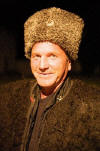
|
Count
Moric Sandor, of Hungary, was known as the Devil's Horseman. During the
early years of the 19th century, Sandor took every opportunity to abuse the
horses under his saddle by racing them against a steamboat on the river Danube
and pitting them against impossible odds over extreme distances. One Hungarian
officer of the time complained that Sandor had "killed enough horses to mount
a regiment." The drawing depicts the infamous horseman in the midst of "Sandor's
Leap."
|

Click on photo to enlarge. |
|
Pierre
Vernay
(right), his
brother, Frederic, and Jean-Yves Lapaix bought two horses in
Canada under false premise and then took them into the Arctic Circle. The
untrained animals were forced to haul heavy sleds through the ice for 80
days and starved to the point of death. Click on photo for details.
|
 |
| | | | |
